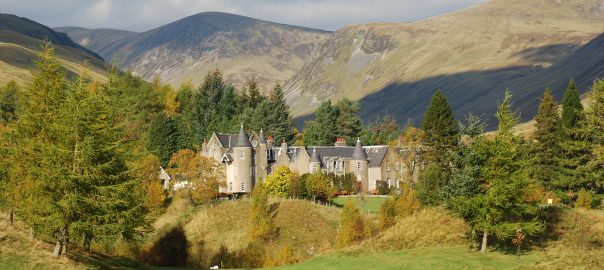
2017 Scotland Field School
The field school is one part of a two-course GNED offering in the Spring 2017 semester. Students earn credit in two 3 credit hour third-tier courses (GNED 3101 and GNED 3301).
Course Schedule:
The course is 6 weeks long (like the other spring courses). We spend two weeks at MRU, and will plan to do some field trips to some of our local protected areas, such as the nearby national and provincial parks. After we return we spend the final two weeks at MRU and students will be completing their term projects during that time. We have Community Service Learning designation for both of the GNED courses covered by this Scotland field school, so the term projects will have a CSL component where students will conduct a project for a community partner.
Itinerary in Scotland:
We arrive in Scotland on May 18 and return home on June 3. Our first stop is St. Andrews University where we meet with university staff conversant in conservation and sustainability. We also visit Falkland Estate, renowned for its role in the history of Scotland and for its present day approach to sustainability. We then proceed to the Cairngorms National Park where we are housed on Mar Lodge Estate and Atholl Estate. We also spend three days in Aviemore. While in the Cairngorms, we undertake at least one local project; in 2015, this entailed a removal of invasive species on Balmoral Estate.
‘Why’ take our studies to the Cairngorms National Park?:
Located in the north east highlands, the Cairngorms National Park is home to 17,000 people residing in over 30 communities; it is visited by approximately 1.4 million tourists per annum. The park also contains several of Scotland’s largest and oldest privately owned estates; it has a long history of human settlement, feudal land ownership and management, and resource extraction. Six different conservation designations protect the natural and cultural heritage, including 25 % of the UKs threatened bird, mammal and plant species.
The pressure to achieve social, economic and environmental sustainability is very real. One purpose for designating this area a national park was to create a model of sustainable rural development. Landowners and residents play a critical role in the delivery of the national park mandate. The Cairngorms National Park field school provides students with an exceptional opportunity to learn firsthand – from gamekeepers, estate managers, shop keepers, residents and park staff – about the day to day challenges faced with achieving social, economic and environmental sustainability.
One of the goals of the course is to allow students to compare the Canadian model of national parks and protected areas to that in Scotland. Consider the possibility people walking across someone else’s private land without it being considered trespassing. Canadians would find this shocking while it is accepted practice in Scotland. We will explore the many similarities with respect to managing national parks in the two countries – specifically managing/controlling invasive species and attempts to reintroduce native species no longer present in the parks.
Why the Scotland Field School in GNED?
Students will explore the day-to-day social, economic and environmental issues associated with defining and achieving long-term sustainability on a lived landscape. Students have a unique opportunity to:
1) Appreciate the need for multi-disciplinary approaches to research and study;
2) Learn field methods, how to set priorities and how to analyse findings;
3) Appreciate contemporary challenges facing national park managers striving to meet Scotland’s National Parks four aims within a diverse natural and social landscape;
4) Learn the intricacies of the new face for national parks and parks of the future;
5) Gain an appreciation of the common and divergent roles played out by different societal sectors, and the influence they possess;
6) Gain an understanding of the role that history plays in shaping current circumstances; and
7) Learn about the challenges of measuring ‘success’ in a context that includes natural, social, economic and political elements.
For more information, please contact:
Dr. Dorothy Hill – dphill@mtroyal.ca or Dr. Kathy Rettie – krettie@mtroyal.ca
Image from: http://visitcairngorms.com/spittalofglenshee
